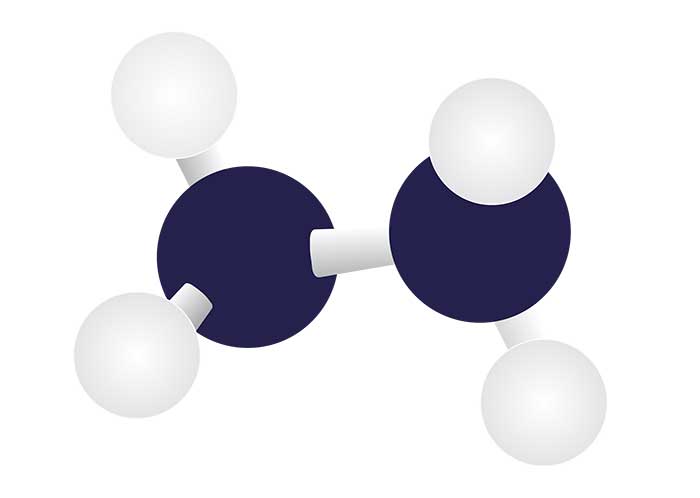Hydrazine Regulations & Restrictions
Safety Concerns and Why Fineamin is the Safer Choice for Boiler Water Treatment
Hydrazine is a powerful oxygen scavenger and corrosion inhibitor traditionally used in boiler water treatment. However, due to its extreme toxicity, carcinogenicity, and environmental hazards, it is subject to strict regulations and bans in many countries.
Meanwhile, Fineamin offers a safe and effective anti-corrosion and anti-scale alternative for water-steam cycles.
ℹ️ You can read more about that here: Fineamin Replacement.
International Context
Over the past three decades, there has been a growing international effort to manage hazardous chemicals in a way that protects both human health and the environment. Hydrazine, while effective in oxygen removal, is now at the center of regulatory pressure due to its toxicity and classification as a carcinogen.
Germany and other EU countries have started phasing it out, OSHA (USA) mandates strict exposure limits and protective measures and in Asia, Middle East, and Latin America, hydrazine remains legal, but scrutiny is rising, especially in international projects with Western partners. In Japan, hydrazine is not yet banned, but its use is being voluntarily reduced under national chemical safety strategies.
And the list goes on.

 Global Framework
Global Framework
The movement towards hydrazine substitution aligns with broader global efforts to reduce chemical risks:
- 1987 – WHO Environmental Health Criteria: Hydrazine
The World Health Organization, through the International Programme on Chemical Safety, published a comprehensive assessment of hydrazine’s toxicological properties, environmental impact, and occupational hazards, highlighting the need for strict control and consideration of safer alternatives. (Reference) - 1992 – Agenda 21
Adopted at the UN Conference on Environment and Development, this action plan for the 21st century emphasized the sustainable management of chemicals, including that of hydrazine (Chapter 19). (Reference) - 2002 – Johannesburg Plan of Implementation
Approved at the World Summit on Sustainable Development, it set the goal of minimizing significant adverse effects of chemicals on human health and the environment by 2020. (Reference) - 2006 – SAICM (Strategic Approach to International Chemicals Management)
This international policy framework was adopted to implement the Johannesburg Plan and improve global chemicals safety. - 2006 – EU REACH Regulation (EC No 1907/2006)
Europe introduced the Registration, Evaluation, Authorization, and Restriction of Chemicals (REACH) regulation, requiring strict documentation and risk evaluation for hazardous substances — including hydrazine — to meet WSSD and SAICM goals. (Reference)
 Hydrazine-Specific Regulations
Hydrazine-Specific Regulations
- IARC Classification – Hydrazine (Group 2A: Probably Carcinogenic to Humans) (Reference)
The International Agency for Research on Cancer (IARC) lists hydrazine as “probably carcinogenic to humans” based on sufficient evidence in animals. Same by the American Conference of Governmental Industrial Hygienists (ACGIH) and Japan’s Ministry of Health, Labour and Welfare. - National Toxicology Program (NTP) – Reasonably Anticipated Human Carcinogen
According to the NTP’s 15th Report on Carcinogens, hydrazine is reasonably anticipated to be a human carcinogen. (Reference) - U.S. and International Health & Safety Organizations
Hydrazine is considered a potential or probable carcinogen by bodies such as ACGIH (animal carcinogen), NIOSH, EPA, and IARC—highlighting its occupational health hazards. - EU Classification – Hydrazine as Category 1B Carcinogen under CLP Regulation
In the EU, hydrazine is classified as a carcinogen in accordance with Article 57 (a) of the Registration, Evaluation, Authorisation and Restriction of Chemicals (REACH) regulations (EC-1907/2006; ECHA, 2011). Hydrazine is included in the list of harmonized classification and labelling of hazardous substances as carcinogen category 1B (ECHA, 2011). - Hydrazine is classified as a toxic and hazardous substance and falls under Seveso Directive. The Seveso Directive is a European Union (EU) directive aimed at preventing and controlling major chemical accidents. It applies to industrial sites that handle large quantities of dangerous substances, and its main goal is to protect human health and the environment. Hydrazine can trigger Seveso III thresholds depending on the quantity stored.

In the EU, about 2.1 million workers are estimated to be potentially exposed to hydrazine. The primary routes of potential human exposure to hydrazine are inhalation, ingestion, and dermal contact. Hydrazine is classified as category 1B carcinogen according to CLP regulation, meaning that the substance may cause cancer in humans. It may increase the risk of lung, colorectal, nasal and liver cancer.. (Reference)
A Hydrazine Replacement Trusted Worldwide – Fineamin in Practice
Internationally, the trend is clear: industrial users — including power plants, food producers, and pharmaceutical manufacturers — are proactively replacing hydrazine with non-toxic alternatives in anticipation of stricter future bans or supply chain pressure. In this context, switching to safer alternatives like Fineamin isn’t just a matter of health — it’s a step toward compliance, sustainability, and future-proofing operations.
Fineamin is already in use across:
District heating systems in Switzerland, Germany, China, and more;
High-pressure, high-temperature boilers in biggest power stations in Europe;
Industrial steam systems in Asia and the Middle East;
Food & beverage industries in Mexico and South America, as well as pharmaceutical plants worlwide, all requiring high-purity steam and NSF certification.
Our solutions have been tested, audited, and trusted by global clients seeking performance without compromise on safety or environmental integrity.
